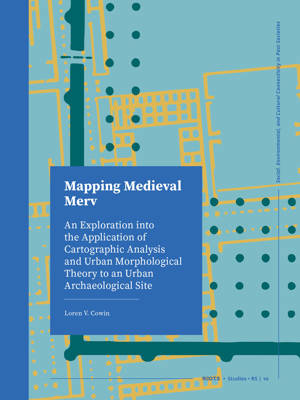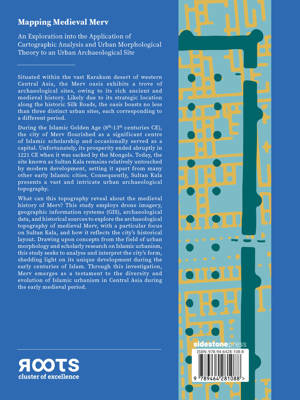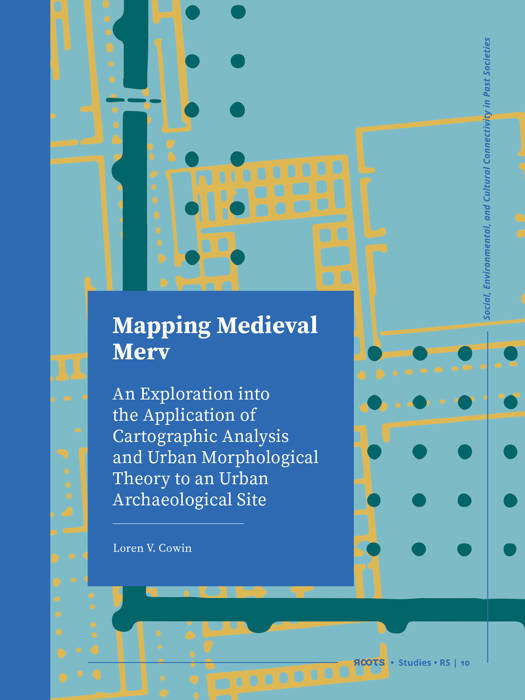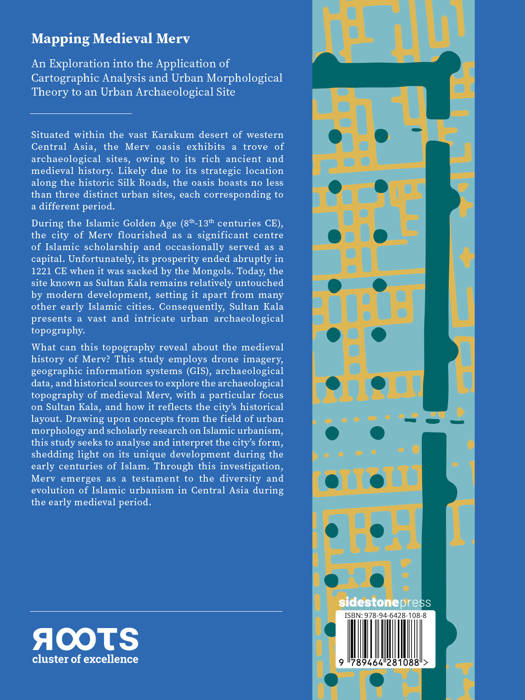
- Retrait gratuit dans votre magasin Club
- 7.000.000 titres dans notre catalogue
- Payer en toute sécurité
- Toujours un magasin près de chez vous
- Retrait gratuit dans votre magasin Club
- 7.000.0000 titres dans notre catalogue
- Payer en toute sécurité
- Toujours un magasin près de chez vous


Mapping Medieval Merv
An Exploration Into the Application of Cartographic Analysis and Urban Morphological Theory to an Urban Archaeological Site
Loren V Cowin
186,95 €
+ 373 points
Format
Description
Situated within the vast Karakum desert of western Central Asia, the Merv oasis exhibits a trove of archaeological sites, owing to its rich ancient and medieval history. Likely due to its strategic location along the historic Silk Roads, the oasis boasts no less than three distinct urban sites, each corresponding to a different period.
During the Islamic Golden Age (8th-13th centuries CE), the city of Merv flourished as a significant centre of Islamic scholarship and occasionally served as a capital. Unfortunately, its prosperity ended abruptly in 1221 CE when it was sacked by the Mongols. Today, the site known as Sultan Kala remains relatively untouched by modern development, setting it apart from many other early Islamic cities. Consequently, Sultan Kala presents a vast and intricate urban archaeological topography.
What can this topography reveal about the medieval history of Merv? This study employs drone imagery, geographic information systems (GIS), archaeological data, and historical sources to explore the archaeological topography of medieval Merv, with a particular focus on Sultan Kala, and how it reflects the city's historical layout. Drawing upon concepts from the field of urban morphology and scholarly research on Islamic urbanism, this study seeks to analyse and interpret the city's form, shedding light on its unique development during the early centuries of Islam. Through this investigation, Merv emerges as a testament to the diversity and evolution of Islamic urbanism in Central Asia during the early medieval period.
During the Islamic Golden Age (8th-13th centuries CE), the city of Merv flourished as a significant centre of Islamic scholarship and occasionally served as a capital. Unfortunately, its prosperity ended abruptly in 1221 CE when it was sacked by the Mongols. Today, the site known as Sultan Kala remains relatively untouched by modern development, setting it apart from many other early Islamic cities. Consequently, Sultan Kala presents a vast and intricate urban archaeological topography.
What can this topography reveal about the medieval history of Merv? This study employs drone imagery, geographic information systems (GIS), archaeological data, and historical sources to explore the archaeological topography of medieval Merv, with a particular focus on Sultan Kala, and how it reflects the city's historical layout. Drawing upon concepts from the field of urban morphology and scholarly research on Islamic urbanism, this study seeks to analyse and interpret the city's form, shedding light on its unique development during the early centuries of Islam. Through this investigation, Merv emerges as a testament to the diversity and evolution of Islamic urbanism in Central Asia during the early medieval period.
Spécifications
Parties prenantes
- Auteur(s) :
- Editeur:
Contenu
- Nombre de pages :
- 160
- Langue:
- Anglais
- Collection :
Caractéristiques
- EAN:
- 9789464281095
- Date de parution :
- 09-10-25
- Format:
- Livre relié
- Format numérique:
- Genaaid
- Dimensions :
- 210 mm x 279 mm

Les avis
Nous publions uniquement les avis qui respectent les conditions requises. Consultez nos conditions pour les avis.







